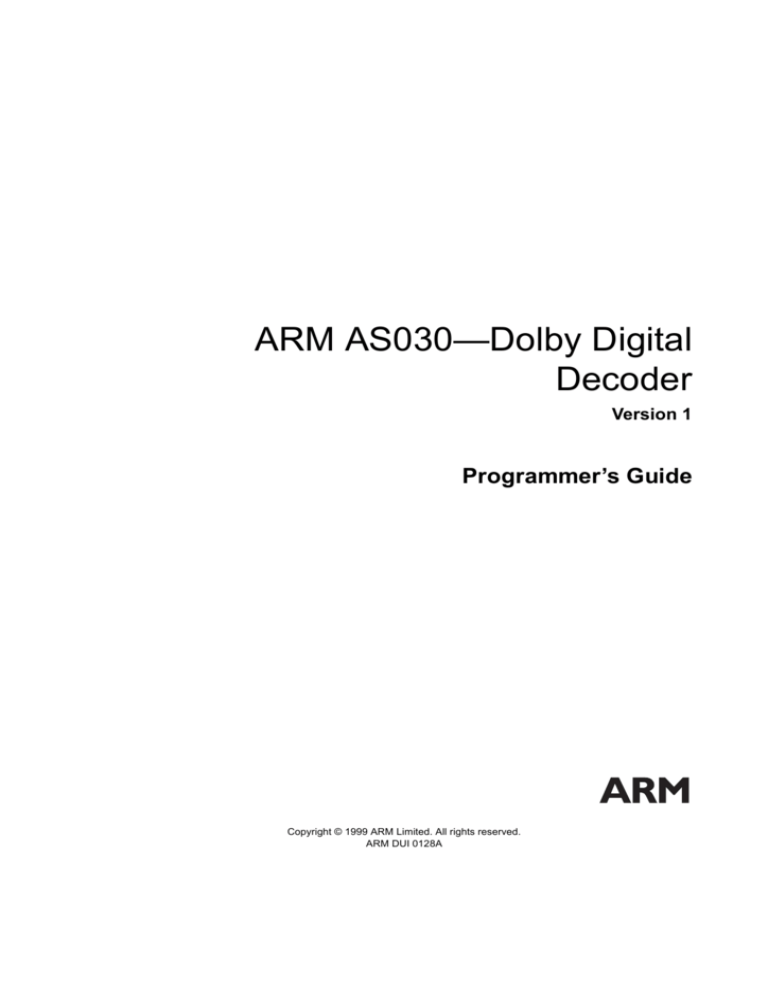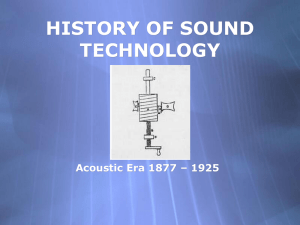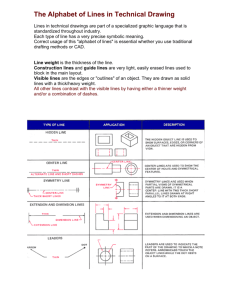
ARM AS030—Dolby Digital
Decoder
Version 1
Programmer’s Guide
Copyright © 1999 ARM Limited. All rights reserved.
ARM DUI 0128A
Copyright © 1999 ARM Limited. All rights reserved.
Release Information
The following changes have been made to this document.
Change history
Date
Issue
Change
September 1999
A
First release
Proprietary Notice
ARM, the ARM Powered logo, Thumb, and StrongARM are registered trademarks of ARM Limited.
The ARM logo, AMBA, Angel, ARMulator, EmbeddedICE, ModelGen, Multi-ICE, PrimeCell ARM7TDMI,
ARM7TDMI-S, ARM9TDMI, TDMI and STRONG are trademarks of ARM Limited.
Dolby, Dolby Digital, and Dolby AC-3 are registered trademarks of Dolby Laboratories.
All other products or services mentioned herein may be trademarks of their respective owners.
Supply of this implementation of Dolby Technology does not convey a license nor imply a right under any
patent, or any other Industrial or Intellectual Property Right of Dolby Laboratories, to use this implementation
in any finished end-user or ready-to-use final product. Companies planning to use this implementation in
products must obtain a license from Dolby Laboratories Licensing Corporation before designing such
products.
Neither the whole nor any part of the information contained in, or the product described in, this document
may be adapted or reproduced in any material form except with the prior written permission of the copyright
holder.
The product described in this document is subject to continuous developments and improvements. All
particulars of the product and its use contained in this document are given by ARM in good faith. However,
all warranties implied or expressed, including but not limited to implied warranties of merchantability, or
fitness for purpose, are excluded.
This document is intended only to assist the reader in the use of the product. ARM Limited shall not be liable
for any loss or damage arising from the use of any information in this document, or any error or omission in
such information, or any incorrect use of the product.
ii
Copyright © 1999 ARM Limited. All rights reserved.
ARM DUI 0128A
Contents
Programmer’s Guide
Preface
About this book ...............................................................................................vi
Feedback ........................................................................................................ix
Chapter 1
Introduction
1.1
1.2
1.3
Chapter 2
The ARM Dolby Digital Decoder API
2.1
2.2
2.3
2.4
Chapter 3
Fractional values .......................................................................................... 2-2
Bitstream input format .................................................................................. 2-3
Interface to the Dolby Digital Decoder ......................................................... 2-4
Dolby Digital Decoder functions ................................................................... 2-6
ARM API and Dolby SIP Differences
3.1
3.2
3.3
ARM DUI 0128A
Overview ...................................................................................................... 1-2
Reference decoder version .......................................................................... 1-5
Terms and conventions ................................................................................ 1-6
Summary of deviations from Dolby SIP ....................................................... 3-2
Changes to names of structures and functions ............................................ 3-3
Specific deviations from the Dolby SIP ........................................................ 3-4
Copyright © 1999 ARM Limited. All rights reserved.
iii
iv
Copyright © 1999 ARM Limited. All rights reserved.
ARM DUI 0128A
Preface
This preface introduces the ARM Dolby Digital Decoder. It contains the following
sections:
•
About this book on page vi
•
Feedback on page ix.
ARM DUI 0128A
Copyright © 1999 ARM Limited. All rights reserved.
v
Preface
About this book
This book is provided with the ARM Dolby Digital Decoder. It describes the
Application Program Interface (API) to the Dolby Digital Decoder library.
Intended audience
This book is written for programmers who want to integrate the ARM Dolby Digital
Decoder into an embedded system.
Using this book
This book is organized into the following chapters:
Chapter 1 Introduction
Read this chapter for an introduction to the ARM Dolby Digital
Decoder.
Chapter 2 The ARM Dolby Digital Decoder API
Read this chapter for a description of the interface to the ARM
Dolby Digital Decoder.
Chapter 3 ARM API and Dolby SIP Differences
Read this chapter to learn all the differences between the
interfaces of the ARM Dolby Digital Decoder and the Dolby
Software Interface Protocol.
vi
Copyright © 1999 ARM Limited. All rights reserved.
ARM DUI 0128A
Preface
Typographical conventions
The following typographical conventions are used in this book:
bold
Highlights interface elements, such as menu names. Also used for
emphasis in descriptive lists, where appropriate.
italic
Highlights special terminology, denotes internal cross-references,
and citations.
typewriter
Denotes text that may be entered at the keyboard, such as
commands, file and program names, and source code.
typewriter
Denotes a permitted abbreviation for a command or option. The
underlined text may be entered instead of the full command or
option name.
typewriter italic
Denotes arguments to commands and functions where the
argument is to be replaced by a specific value.
typewriter bold Denotes language keywords when used outside example code.
Further reading
This section lists publications from both ARM Limited and third parties that provide
additional information on developing the ARM Dolby Digital Decoder.
ARM periodically provides updates and corrections to its documentation. See
http://www.arm.com for current errata sheets and addenda.
See also the ARM Frequently Asked Questions list at:
http://www.arm.com/DevSupp/Sales+Support/faq.html
ARM publications
This book contains reference information that is specific to the ARM Dolby Digital
Decoder. For additional information, refer to the following ARM publications:
•
Fixed Point Arithmetic on the ARM Application Note (ARM DAI 0033)
•
ARM Application Library Programmer’s Guide (ARM DUI 0081).
ARM DUI 0128A
Copyright © 1999 ARM Limited. All rights reserved.
vii
Preface
Other publications
For other reference information relating to the ARM Dolby Digital Decoder, please
refer to the following:
•
Digital Audio Compression Standard, ATSC Document A/52, 1995.
•
Dolby DSP Software Interface Protocol (S96/10549/10816), Dolby Laboratories
Inc.
To obtain this document, you should contact Dolby Laboratories.
viii
Copyright © 1999 ARM Limited. All rights reserved.
ARM DUI 0128A
Preface
Feedback
ARM Limited welcomes feedback on both the ARM Dolby Digital Decoder, and its
documentation.
Feedback on the ARM Digital Decoder
If you have any problems with the ARM Dolby Digital Decoder, please contact your
supplier. To help us provide a rapid and useful response, please give:
•
details of the release you are using
•
details of the platform you are running on, such as the hardware platform,
operating system type and version
•
a small standalone sample of code that reproduces the problem
•
a clear explanation of what you expected to happen, and what actually happened
•
the commands you used, including any command-line options
•
sample output illustrating the problem
•
the version string of the tool, including the version number and date.
Feedback on this book
If you have any comments on this book, please send email to errata@arm.com giving:
•
the document title
•
the document number
•
the page number(s) to which your comments apply
•
a concise explanation of the problem.
General suggestions for additions and improvements are also welcome.
ARM DUI 0128A
Copyright © 1999 ARM Limited. All rights reserved.
ix
Preface
x
Copyright © 1999 ARM Limited. All rights reserved.
ARM DUI 0128A
Chapter 1
Introduction
This chapter provides an overview of the ARM Dolby Digital Decoder. It includes the
following sections:
•
Overview on page 1-2
•
Reference decoder version on page 1-5
•
Terms and conventions on page 1-6.
ARM DUI 0128A
Copyright © 1999 ARM Limited. All rights reserved.
1-1
Introduction
1.1
Overview
This guide is provided with the ARM Dolby Digital Decoder, an optimized library that
is designed to efficiently decode Dolby Digital AC-3 for the ARM processor family.
The ARM Dolby Digital Decoder has been submitted for evaluation by Dolby
Laboratories and fully complies with Dolby Laboratories decoder Integrated Circuit
(IC) requirements.
This Application Programmer Interface (API) is as similar as possible to the Dolby
Software Interface Protocol (SIP). This guide describes the API in detail and indicates
exactly how the API differs from the Dolby SIP.
1.1.1
Features supplied by the ARM Dolby Digital Decoder
This section describes the basic features included with the ARM Dolby Digital
Decoder. Some are provided with the source, while others do not contain the sources.
The features provided are:
•
Dolby Digital Decoder library—without source
•
Floating point support—with source
•
Command-line application—with source on page 1-4
•
Real-time demonstration software—with source on page 1-4.
Dolby Digital Decoder library—without source
The Dolby Digital Decoder library is available without source files. It is built with:
•
either little-endian or big-endian
•
1.31 fixed-point format for all fractional values
•
no software stack checking
•
ARM-code only (no Thumb)
•
no unaligned load or store instructions.
The decoder is karaoke-capable.
Please contact ARM if you require different options than those above.
Floating point support—with source
The support library provides a floating-point interface to the Dolby Digital Decoder
library. Its usage is illustrated in Figure 1-1 on page 1-3.
1-2
Copyright © 1999 ARM Limited. All rights reserved.
ARM DUI 0128A
Introduction
User application
Floating Dolby SIP
Floating-point support library
Fixed-point ARM API
Dolby Digital Decoder library
Figure 1-1 Using the optional floating point support
If you have code written to use the Dolby Simulator, version 3.11, it will work
immediately when linked with the support library and the Dolby Digital Decoder,
provided the code conforms to the Dolby SIP.
Note
All references to the Dolby Simulator throughout this book refer to version 3.11.
It is unlikely that you will use any of the support code in the final product because it is
very slow. On a typical ARM processor without floating-point hardware, the support
code takes much longer to run than the decoder.
Each fractional value in the Dolby SIP may be independently set to a floating-point or
fixed-point value. This will enable a working floating-point implementation to be
gradually ported to fixed-point. If a fractional value is naturally held as a floating-point
value in your application, it may be beneficial to leave the floating-point conversion in
place. However, it is usually preferable to move the conversion overhead so that it is not
executed on every AC-3 block.
ARM DUI 0128A
Copyright © 1999 ARM Limited. All rights reserved.
1-3
Introduction
Command-line application—with source
The command-line application consists of the following files from the Dolby Simulator:
USR_COM.H (unmodified)
•
USR_EQU.H (unmodified)
•
DOLBY_PL.H (unmodified)
•
DECODE.C (unmodified)
•
UDATA_D.C (unmodified)
•
USR_SIM.H (modified to include only ANSI headers if built for ARM).
•
The project file, original.apj is also supplied.
This project links with the support library and the Dolby Digital Decoder library to
build the Dolby Digital command-line decoder. The command line option -h returns
the usage information.
Real-time demonstration software—with source
ARM supplies real-time demonstration software that runs on the EBSA285
development board. Refer to the readme.txt file in the root directory that is created
when you install the software.
1-4
Copyright © 1999 ARM Limited. All rights reserved.
ARM DUI 0128A
Introduction
1.2
Reference decoder version
The ARM Dolby Digital Decoder is based on the Dolby AC-3 Decoder Simulation.
The following version numbers returned by the decoder library are the same as the
reference code:
AC3I_REV
CRC_REV
AC3D_REV
ARM DUI 0128A
0x0300
0x0300
0x030B
(AC-3 Frame Information)
(CRC Calculation)
(AC-3 Decode)
Copyright © 1999 ARM Limited. All rights reserved.
1-5
Introduction
1.3
Terms and conventions
In this document, the following terms are used:
Application Programmer Interface (API)
is the interface between the decoder library and the user program.
audio block is part of a synchronization frame, containing 256 samples per channel.
executive
is a term used in Dolby documentation to refer to the systems software
calling the decoder library.
Software Interface Protocol (SIP)
is the Dolby Laboratories term for the interface between the decoder
library and the user program.
synchronization frame
is one frame of AC-3 compressed audio, containing 1536 samples per
channel. A synchronization frame contains six audio blocks.
syncword
is a 16-bit constant that marks the beginning of a synchronization frame.
Conventions used throughout the document, such as the use of bold or italic font, are
explained in Typographical conventions on page vii.
1-6
Copyright © 1999 ARM Limited. All rights reserved.
ARM DUI 0128A
Chapter 2
The ARM Dolby Digital Decoder API
This chapter describes the API to the ARM Dolby Digital Decoder. It is designed to be
read alongside Dolby DSP Software Interface Protocol.
This chapter contains the following sections:
•
Fractional values on page 2-2
•
Bitstream input format on page 2-3
•
Interface to the Dolby Digital Decoder on page 2-4
•
Dolby Digital Decoder functions on page 2-6.
ARM DUI 0128A
Copyright © 1999 ARM Limited. All rights reserved.
Open Final
2-1
The ARM Dolby Digital Decoder API
2.1
Fractional values
All fractional values are passed in 1.31 fixed-point form.
A fractional value, x, between -1.0 (inclusive) and 1.0 (exclusive), is represented by the
integer n, given by:
n = x.231
A full list of the fractional values represented in this way is:
•
dynamic range scale factors
•
Pulse Code Modulation (PCM) output scale factor
•
user-specified downmix table
•
user-specified karaoke level/pan table
•
decoded PCM output.
The application note Fixed Point Arithmetic on the ARM shows how to write efficient
fixed-point code on the ARM. The type APIfract is used to pass 1.31 fixed-point
values. It is defined as follows:
typedef int APIfract;
2-2
Copyright © 1999 ARM Limited. All rights reserved.
Open Final
ARM DUI 0128A
The ARM Dolby Digital Decoder API
2.2
Bitstream input format
The bitstream must be presented to the decoder as an array of 16-bit shorts, each with
the left (most significant) bit first.
For example, the following stream:
0000 1011 0111 0111 1101 0010 1000 0101…
would be represented by:
0x0b77, 0xd285…
On a little-endian machine, this is equivalent to an integer array beginning with:
0xd2850b77
On a big-endian machine, this is equivalent to an integer array beginning with:
0x0b77d285
If the input from the hardware is right-bit-first, the user code will have to bit-wise
reverse the input. An example of such code can be found in the ARM Applications
Library, which contains an efficient macro, BITREVC. This macro bit-wise reverses a
32-bit register in 12 cycles. Using this macro, on a 320kbps stream, the penalty is about
0.1MHz, ignoring load/store overhead.
ARM DUI 0128A
Copyright © 1999 ARM Limited. All rights reserved.
Open Final
2-3
The ARM Dolby Digital Decoder API
2.3
Interface to the Dolby Digital Decoder
The header file dolbyapi.h contains the complete API definitions for the ARM Dolby
Digital Decoder. The interface to the decoder is designed to be as similar as possible to
the Dolby Digital Signal Processing (DSP) described in Dolby DSP Software Interface
Protocol.
The decoder library is accessed using the dolby_api() function defined in
dolbyapi.h:
typedef struct dolby_api
int funcnum;
/*
int status;
/*
void *param_ptr; /*
} DOLBY_API;
{
function number */
error status */
pointer to parameter list structure */
__value_in_regs DOLBY_API dolby_api(DOLBY_API input_sip);
There are no other functions or global variables available to the main program.
This file also declares structures suitable for the data pointed to by param_ptr. This
file is similar to the dolby_pl.h, supplied with the Dolby Simulator, except for the
following differences:
•
All fractional values are 1.31 fixed-point integer.
•
Several function and structure names have been changed to draw attention to the
differences (see Changes to names of structures and functions on page 3-3).
•
The return type of dolby_api is __value_in_regs. This instructs the ARM
compiler to pass this structure more efficiently.
•
The elements funcnum and status of DOLBY_API are ints rather than shorts.
This allows __value_in_regs to use the processor registers more efficiently.
•
The header is guarded against multiple inclusion.
The filename has been changed to draw attention to these differences.
2-4
Copyright © 1999 ARM Limited. All rights reserved.
Open Final
ARM DUI 0128A
The ARM Dolby Digital Decoder API
The Dolby DSP Software Interface Protocol document refers to the processor registers
FR, SR, and LPR for subroutine input and output. The ARM implementation, like the
Dolby Simulator, uses the structure defined in Table 2-1.
Table 2-1 FR, SR, and LPR registers
Register name
Description
Element of DOLBY_API structure
Function
Register (FR)
The function number
int funcnum
Status Register
(SR)
Error status for the routine
int status
List Pointer
Register (LPR)
Pointer to parameter list
structure. This will point to
an instantiation of the
appropriate structure defined
in dolbyapi.h.
void *param_ptr
To allow for platform independence, all 16-bit values in the structures pointed to by
LPR are of type DSPshort in the original Dolby code. The type is defined as:
typedef short DSPshort;
ARM DUI 0128A
Copyright © 1999 ARM Limited. All rights reserved.
Open Final
2-5
The ARM Dolby Digital Decoder API
2.4
Dolby Digital Decoder functions
Table 2-2 provides a list of the functions supported by the Dolby Digital Decoder
library.
Table 2-2 Dolby Digital Decoder supported functions
Function
number
Name
Description
0
DD_SYS_INIT
System initialization
1
DD_AC3_INFO
AC-3 frame information
2
DD_CRC_CALC
Cyclic Redundancy Check (CRC) calculation
3
DD_AC3_DEC
AC-3 decode
4
DD_AC3_AUX
AC-3 auxiliary data decode
This section provides an overview of each function provided by the Dolby Digital
Decoder library. Refer to Dolby DSP Software Interface Protocol for specific details of
each function. You can refer to Specific deviations from the Dolby SIP on page 3-4 for
differences between the ARM API and the API described in Dolby DSP Software
Interface Protocol.
2.4.1
Function 0: system initialization
The initialization function must be called once on system start up, before any other
function is called. This function is compatible with the corresponding function in the
Dolby Simulator.
This function does not perform a significant amount of processing. It also does not
cause any function called afterward to take significantly longer than usual.
2-6
Inputs
FR
SR
LPR
0 (DD_SYS_INIT).
0.
0.
Outputs
FR
SR
LPR
Dolby subroutine package version.
0.
0.
Copyright © 1999 ARM Limited. All rights reserved.
Open Final
ARM DUI 0128A
The ARM Dolby Digital Decoder API
2.4.2
Function 1: AC-3 frame information
This function accepts the first 20 bytes of an AC-3 synchronization frame and provides
information from the header of the frame.
Inputs
FR
SR
LPR
1 (DD_AC3_INFO).
0.
Pointer to the input parameter structure:
typedef struct ac3_info_pl {
DSPshort size; /* input parameter list size */
DSPshort *iptr;/* input buffer pointer */
DSPshort ioff; /* input offset pointer */
DSPshort imod; /* input modulo pointer (ignored) */
DSPshort icfg; /* input buffer config (ignored) */
} AC3API_INFO_PL;
Outputs
FR
AC-3 frame information version.
SR
Return status:
0
No errors.
1
Invalid frame syncword.
2
Invalid sample rate.
3
Invalid data rate.
LPR
Pointer to the return parameter structure:
typedef struct ac3_info_rl {
DSPshort size;
/* return parameter list size */
DSPshort bscfg;
/* bitstream configuration */
DSPshort frmsize; /* frame size */
DSPshort crcsize; /* first CRC buffer size */
DSPshort bsinfo; /* bitstream info */
DSPshort dialnorm;/* dialog normalization values */
DSPshort langcod; /* language code values */
DSPshort audprod; /* audio production values */
DSPshort timecod1;/* time code values, 1st half */
DSPshort timecod2;/* time code values, 2nd half */
} AC3API_INFO_RL;
The output parameter structure is encoded as described in Dolby DSP Software
Interface Protocol.
ARM DUI 0128A
Copyright © 1999 ARM Limited. All rights reserved.
Open Final
2-7
The ARM Dolby Digital Decoder API
If an error is returned, the pointer to the return parameter structure is undefined.
2.4.3
Function 2: CRC calculation
This function calculates the CRC of the input data stream. This function should be
called twice per synchronization frame:
•
Before decoding the first audio block of the sync frame:
Perform a CRC on the first 5/8 of the sync frame, shorts numbered 1 through
crcsize of the frame buffer, inclusive. The crcsize parameter is returned by
function one (see Function 1: AC-3 frame information on page 2-7).
Note
The first short (numbered 0) is the sync word, which is not covered by the CRC.
•
Before decoding the third audio block of the synchronization frame:
Perform a CRC on the final 3/8 of the sync frame, shorts numbered crcsize+1
through frmsize-1 of the frame buffer, inclusive. The crcsize and frmsize
parameters are returned by function one (see Function 1: AC-3 frame information
on page 2-7).
The processing time taken by this function is very small, but you can distribute the
computational load across several calls, if required.
Inputs
FR
2 (DD_CRC_CALC).
SR
Input CRC syndrome. This should be zero on the first call.
LPR
Pointer to the input parameter structure:
typedef struct crc_calc_pl {
DSPshort size; /* input parameter list size */
DSPshort *iptr;/* input packed buffer pointer */
DSPshort ioff; /* input packed buffer offset */
DSPshort imod; /* input packed buffer modulo */
/* (ignored) */
DSPshort icfg; /* input buffer config (ignored) */
DSPshort count;/* CRC word count */
} A3API_CRC_CALC_PL;
2-8
Copyright © 1999 ARM Limited. All rights reserved.
Open Final
ARM DUI 0128A
The ARM Dolby Digital Decoder API
Outputs
FR
CRC calculation version.
SR
Output CRC syndrome.
At the end of the calculation, this value will be zero if the data has passed
the CRC-check, otherwise it will be nonzero. It is acceptable to divide the
CRC calculation into more than one CRC call, but only if the output
syndrome becomes the input syndrome of the next call.
Note
The specific nonzero value returned in case of failure may be different
than that returned by the Dolby Simulator.
LPR
ARM DUI 0128A
0.
Copyright © 1999 ARM Limited. All rights reserved.
Open Final
2-9
The ARM Dolby Digital Decoder API
2.4.4
Function 3: AC-3 decode
This function decompresses AC-3 audio data into PCM samples. This function must be
called six times per sync frame, once for each 256-sample-per-channel audio block.
Inputs
FR
3 (DD_AC3_DEC).
SR
Input block error status:
0
No errors.
positive Known errors. Repeat previous audio block.
negative Known errors. Mute outputs.
LPR
Pointer to the input parameter structure:
typedef struct ac3_dec_pl {
DSPshort size;
/* input parameter list size */
DSPshort *iptr;
/* input buffer pointer */
DSPshort ioff;
/* input offset pointer */
DSPshort imod;
/* input modulo pointer */
/* (ignored) */
DSPshort icfg;
/* input buffer config */
/* (ignored) */
APIfract **optr; /* output packed buffer */
/* pointer */
DSPshort *ooff;
/* output packed buffer offset */
DSPshort *omod;
/* output packed buffer modulo */
/* (ignored) */
DSPshort ocfg;
/* output buffer config */
/* (partly ignored) */
DSPshort blknum; /* current block number */
APIfract dynsclh; /* dynamic range scale high */
/* value */
APIfract dynscll; /* dynamic range scale low */
/* value */
APIfract pcmscl; /* pcm scale factor */
DSPshort rptmax; /* maximum repeat value before */
/* muting */
APIfract *dnmxptr;/* user-specified downmix */
/* table */
APIfract *krkptr; /* karaoke-capable mix/pan */
/* parameters */
DSPshort debug;
/* Dolby internal use only */
} AC3API_DEC_PL;
Refer to Dolby DSP Software Interface Protocol for a full description of
the input parameters.
2-10
Copyright © 1999 ARM Limited. All rights reserved.
Open Final
ARM DUI 0128A
The ARM Dolby Digital Decoder API
Outputs
ARM DUI 0128A
FR
AC-3 decoder version.
SR
Output block status:
0
No errors.
1
Input status nonzero. Outputs were repeated.
2
Input status nonzero. Outputs were muted.
3
Unsupported bit stream identification revision.
4
Unsupported number of channels in input stream.
5
Unsupported number of input streams.
LPR
0.
Copyright © 1999 ARM Limited. All rights reserved.
Open Final
2-11
The ARM Dolby Digital Decoder API
2.4.5
Function 4: AC-3 auxiliary data decode
This function copies the auxiliary data within the AC-3 stream into a user buffer.
Inputs
FS
4 (DD_AC3_AUX).
SR
0.
LPR
Pointer to the input parameter structure:
typedef struct ac3_aux_pl {
DSPshort size;
/* input parameter list size */
DSPshort *iptr;
/* input packed buffer pointer */
DSPshort ioff;
/* input packed buffer offset */
DSPshort imod;
/* input packed buffer modulo */
/* (ignored) */
DSPshort icfg;
/* input buffer config */
/* (ignored) */
DSPshort maxcnt; /* max aux data count */
DSPshort *auxptr; /* aux data buffer pointer */
DSPshort auxoff; /* aux data buffer offset */
DSPshort auxmod; /* aux data buffer modulo */
/* (ignored) */
DSPshort auxcfg; /* aux data buffer config */
/* (ignored) */
} AC3API_AUX_PL;
Refer to Dolby DSP Software Interface Protocol for a full description of
the input parameters.
Outputs
FR
AC-3 auxiliary data decode version.
SR
Lost data count. This is the number of bits that could not be returned
because the output buffer was too small. If your application permits
dynamic allocation, for example, you can try to increase the size of the
buffer and call this function again.
LPR
Pointer to the output parameter structure:
typedef struct ac3_aux_rl {
DSPshort size;
/* output parameter list size */
DSPshort auxcnt; /* number of aux bits copied */
DSPshort *auxptr; /* updated aux buffer pointer */
DSPshort auxoff; /* updated aux buffer offset */
} AC3API_AUX_RL;
2-12
Copyright © 1999 ARM Limited. All rights reserved.
Open Final
ARM DUI 0128A
Chapter 3
ARM API and Dolby SIP Differences
This chapter describes the differences between the ARM Dolby Digital Decoder API
and the Dolby SIP. It is intended to assist in porting a Dolby-interface application to the
ARM Dolby Digital Decoder.
This chapter contains the following sections:
•
Summary of deviations from Dolby SIP on page 3-2
•
Changes to names of structures and functions on page 3-3
•
Specific deviations from the Dolby SIP on page 3-4.
ARM DUI 0128A
Copyright © 1999 ARM Limited. All rights reserved.
3-1
ARM API and Dolby SIP Differences
3.1
Summary of deviations from Dolby SIP
The main differences between the ARM API and the Dolby SIP are:
•
No modulo addressing. This would impose a large overhead on execution time
with marginal benefit.
•
Buffer data width is not adjustable.
•
PCM rounding control is not adjustable.
•
Fractional values are represented as 1.31 fixed-point integers. The support library
implements a slower floating-point API.
These changes are reflected in the structures defined in dolbyapi.h.
3-2
Copyright © 1999 ARM Limited. All rights reserved.
ARM DUI 0128A
ARM API and Dolby SIP Differences
3.2
Changes to names of structures and functions
The C header file dolbyapi.h is based on the header file dolby_pl.h that is supplied
with the Dolby Simulator, version 3.11. The structure and function names have been
modified to draw attention to the differences, as shown in Table 3-1.
Table 3-1 Changes from dolby_pl.h to dolbyapi.h
ARM DUI 0128A
Old name in dolby_pl.h
New name in dolbyapi.h
Description
dolby_sub()
dolby_api()
Entry point to the Dolby
Digital Decoder
DOLBY_SIP
DOLBY_API
Arguments for the entry
point function
AC3_INFO_PL
AC3API_INFO_PL
Parameter list for header
decode
AC3_INFO_RL
AC3API_INFO_RL
Return list for header
decode
CRC_CALC_PL
AC3API_CRC_CALC_PL
Parameter list for CRC
calculation
AC3_DEC_PL
AC3API_DEC_PL
Parameter list for decode
data
AC3_DEC_RL
AC3API_DEC_RL
Return list for decode
data
Copyright © 1999 ARM Limited. All rights reserved.
3-3
ARM API and Dolby SIP Differences
3.3
Specific deviations from the Dolby SIP
This section describes specific differences, by function, between the ARM Dolby
Digital Decoder API and the Dolby SIP.
3.3.1
Function 0: system initialization
There is no deviation of this function from the Dolby SIP.
3.3.2
Function 1: AC-3 frame information
This function deviates from the Dolby SIP as follows:
3.3.3
•
Input parameter 3 (input modulo pointer) is ignored. There is no modulo
addressing.
•
Input parameter 4 (input buffer configuration information) is ignored. Bits 15-14
are assumed to contain binary value 01.
Function 2: CRC calculation
There is no deviation of this function from the Dolby SIP.
As described in Dolby DSP Software Interface Protocol, this function returns zero if,
and only if, the CRC passes. If the CRC fails, the value returned is nonzero, but it may
not be the same nonzero value that would be returned by the Dolby Simulator, version
3.11.
3-4
Copyright © 1999 ARM Limited. All rights reserved.
ARM DUI 0128A
ARM API and Dolby SIP Differences
3.3.4
Function 3: AC-3 decode
This function deviates from the Dolby SIP as follows:
ARM DUI 0128A
•
Input parameter 3 (input modulo pointer) is ignored. There is no modulo
addressing.
•
Input parameter 4 (input buffer configuration information) is ignored. Bits 15-14
are assumed to contain the binary value 01.
•
Input parameter 7 (pointer to the array of output buffer modulos) is ignored. There
is no modulo addressing.
•
Input parameter 8 (output buffer configuration information) is limited in scope:
— Bits 15-14 (Output buffer data width) are ignored. They are assumed to
contain binary value 00.
— Bits 11-10 (PCM rounding control) are ignored. The decoder always
returns 1.31 fixed-point integers with maximum accuracy.
•
Input parameter 10 (dynamic range scale factor, high) is a 1.31 fixed point integer.
•
Input parameter 11 (dynamic range scale factor, low) is a 1.31 fixed point integer.
•
Input parameter 12 (PCM scale factor) is a 1.31 fixed point integer.
•
Input parameter 14 (user-specified downmixing table pointer) is a pointer to a 6x6
array of 1.31 fixed-point integers.
•
Input parameter 14 (user-specified karaoke level/pan table) is a pointer to an array
of 1.31 fixed-point integers.
Copyright © 1999 ARM Limited. All rights reserved.
3-5
ARM API and Dolby SIP Differences
3.3.5
Function 4: AC-3 auxiliary data decode
This function deviates from the Dolby SIP as follows:
3-6
•
Input parameter 3 (input modulo pointer) is ignored. There is no modulo
addressing.
•
Input parameter 4 (input buffer configuration information) is ignored. Bits 15-14
are assumed to contain the binary value 01.
•
Input parameter 8 (auxiliary modulo pointer) is ignored. There is no modulo
addressing.
•
Input parameter 9 (auxiliary buffer configuration information) is ignored. Bits
15-14 are assumed to contain binary value 01.
Copyright © 1999 ARM Limited. All rights reserved.
ARM DUI 0128A
Index
The items in this index are listed in alphabetical order, with symbols and numerics appearing at the end. The
references given are to page numbers.
A
Bitstream input format 2-3
AC-3 auxiliary data decode 2-12, 3-6
AC-3 decode 2-10, 3-5
AC-3 frame information 2-7, 3-4
AC3API_AUX_PL 2-12
AC3API_AUX_RL 2-12
AC3API_CRC_CALC_PL 3-3
AC3API_DEC_PL 2-10, 3-3
AC3API_DEC_RL 3-3
AC3API_INFO_PL 2-7, 3-3
AC3API_INFO_RL 2-7, 3-3
AC3_DEC_PL 3-3
AC3_DEC_RL 3-3
AC3_INFO_PL 3-3
AC3_INFO_RL 3-3
ARM Applications Library 2-3
A3API_CRC_CALC_PL 2-8
B
BITREVC 2-3
ARM DUI 0128A
C
Command-line application 1-4
Command-line decoder 1-4
CRC calculation 2-8, 3-4
CRC_CALC_PL 3-3
Cyclic redundancy check (CRC) 2-6,
3-3, 3-4
D
DD_AC3_AUX 2-6, 2-12
DD_AC3_DEC 2-6, 2-10
DD_AC3_INFO 2-6, 2-7
DD_CRC_CALC 2-6, 2-8
DD_SYS_INIT 2-6
DECODE.C 1-4
Dolby AC-3 Decoder Simulation 1-5
Dolby Digital Decoder
functions 2-6
interface 2-4
library 1-2, 2-6, 3-2
Dolby Simulator 1-3, 2-4, 2-5, 2-6, 2-9,
3-3, 3-4
dolbyapi.h 2-4, 2-5, 3-2, 3-3
DOLBY_API 3-3
DOLBY_API structure 2-5
dolby_api() 2-4, 3-3
DOLBY_PL.H 1-4
dolby_pl.h 2-4, 3-3
DOLBY_SIP 3-3
dolby_sub() 3-3
Downmix table 2-2
F
Features (decoder)
command-line application 1-4
Dolby Digital Decoder
library 1-2
floating point support 1-2
Copyright © 1999 ARM Limited. All rights reserved.
Index-1
Index
USR_SIM.H 1-4
real-time demonstration software
1-4
Floating point support 1-2
Fractional values 2-2
Function Register (FR) 2-5
K
Karaoke level/pan table 2-2
L
Library 1-2, 2-6, 3-2
List Pointer Register (LPR) 2-5
O
original.apj 1-4
P
param_ptr 2-4
PCM samples 2-10
Pulse Code Modulation (PCM) 2-2,
3-2
R
Real-time demonstration software 1-4
Reference decoder 1-5
Registers 2-5
S
Status Register (SR) 2-5
System initialization 2-6, 3-4
U
UDATA_D.C 1-4
USR_COM.H 1-4
USR_EQU.H 1-4
Index-2
Copyright © 1999 ARM Limited. All rights reserved.
ARM DUI 0128A









